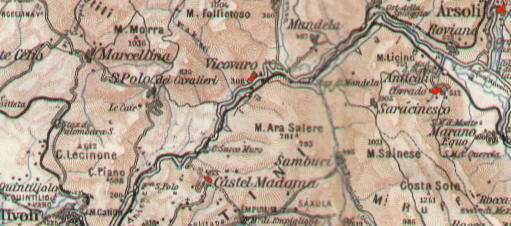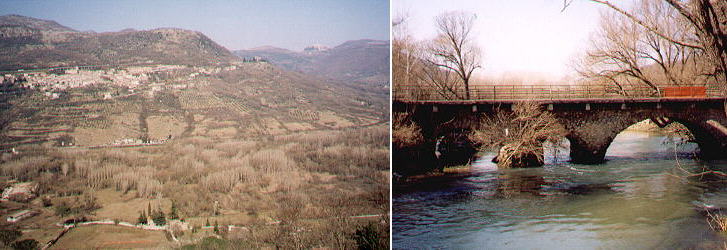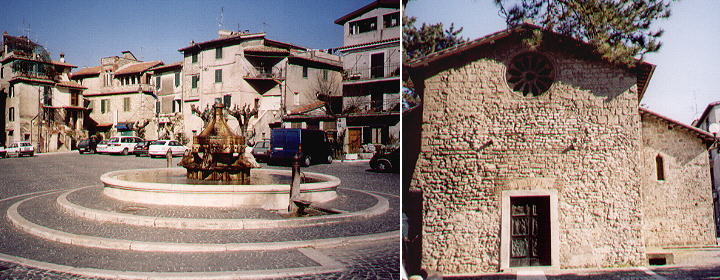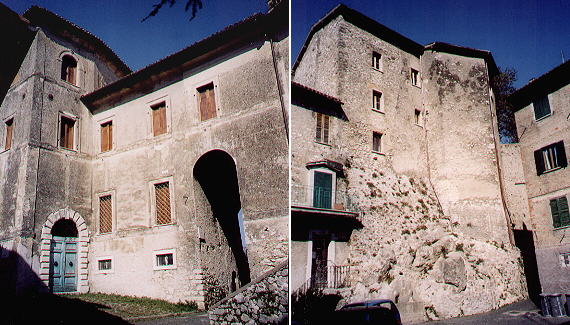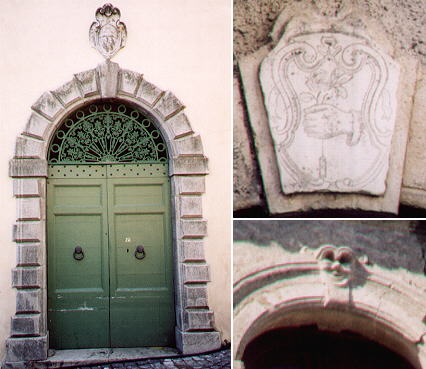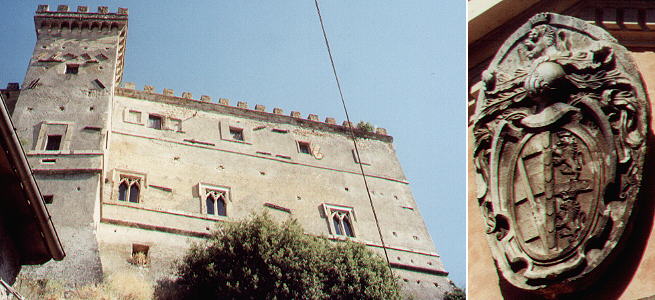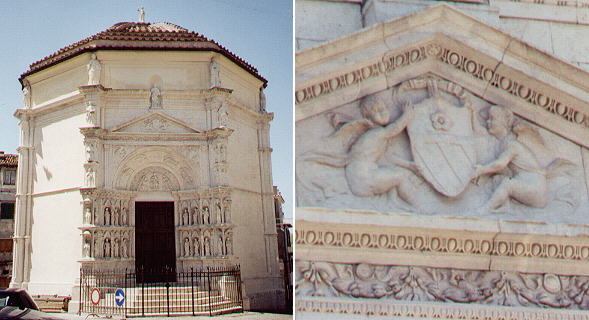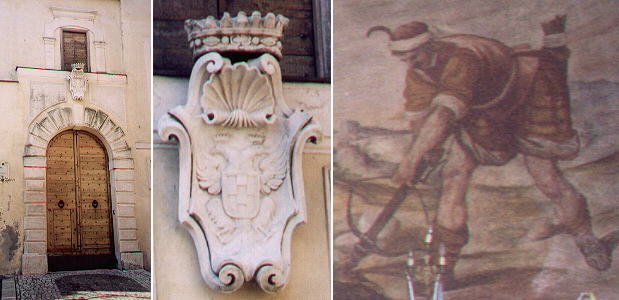  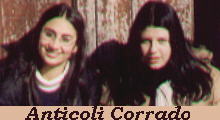 where the painters found their models where the painters found their models(Cristina - left - and Elisabetta - right - were so kind to pose for romeartlover)
Anticoli Corrado
Anticoli became known in the XIXth century because its young inhabitants used to pose as models for the community of artists living near Piazza di Spagna. Some artists eventually went to see the birthplace of their models and found Anticoli a very picturesque site to the point of living there for some time. The town attracted artists until World War II. Anticoli and some of the neighbouring towns (shown in this page) were portrayed in many paintings. Anticoli can be reached from Tivoli following Via Tiburtina Valeria.
The development of the valley owes a lot to the Emperor Nero, who built a large villa in the upper valley of the Aniene, at a location known as Sublaqueum (today the town of Subiaco) named after the three artificial lakes embellishing the villa of the Emperor. The development was also due to the Anio Novus an aqueduct built by the Emperor Claudius, but extended by Trajan to reach the lakes of Subiaco. The road which departs from Via Tiburtina Valeria to reach Anticoli Corrado crosses the Aniene on an ancient Roman bridge.
The main square of today's Anticoli was in the past an open space between the town and its cemetery. The fountain at the center of the square is by Arturo Martini who donated it to Anticoli. S. Pietro is the oldest church in town and it dates back to the XIth century.
Anticoli is built on the slope of the hill and rather than streets it has steps (which sometimes are cut in the stone of which the hill is made). Several buildings show a certain level of wealth, which is confirmed by many coats of arms.
Most of the streets of Anticoli are dedicated to the painters who came to live here and who in some cases fell in love with their model and married her settling in Anticoli (see a page on a family of painters). The museum of Anticoli exhibits works of the painters who lived in Anticoli, including Maurice Sterne, an American born in Latvia, who travelled extensively in Europe and Asia. (see a work by Sterne on the web site of the museum).
Arsoli
Arsoli was the last town belonging to the State of the Church before the border with the Kingdom of Naples. It was acquired in 1574 by the Massimo family: the imposing XIth century castle was largely rebuilt by the Massimo in the XVIth century. The main church bears the coats of arms of the family rather than those of a bishop or a cardinal (see Palazzo Massimo in Rome). Vicovaro
Vicovaro was for more than five centuries a fiefdom of the Orsini family. Its little church of S. Giacomo built in the XVth century is an interesting example of the transition from Gothic (lower part of the portal by Domenico di Capodistria) to Renaissance (upper part of the portal by Giovanni Dalmata with a fine coat of arms of the Orsini). Castel Madama
Castel Madama is named after Margaret, daughter of the Austrian Emperor Charles V, who married first Alessandro de' Medici and then Ottavio Farnese, Duke of Parma. In addition to Palazzo Madama and Villa Madama she acquired the castle built by the Orsini on the top of a hill. This explains why the coat of arms at the entrance of the castle shows the double headed eagle of the Habsburg. During her stay in the castle, the little church of S. Quirico was embellished with paintings by Federico Zuccari (Martyrdom of St Sebastian, the detail shows a XVIth century crossbowman). The view of Castel Madama from the valley was very picturesque and it attracted the attention of many painters. Today too many modern buildings hide the castle, but by following this link to a Victorian web site you can see a view of Castel Madama from a drawing by James Duffield Harding included in The Landscape Annual for 1833: The Tourist in Italy. some other walks: Walks with Ferdinand Gregorovius in the Roman countryside In and about Viterbo In Maremma A Pilgrims' Way Around Monte Cimino On the Edge of the Marsh From Civitavecchia to Civita Castellana From Bracciano to Viterbo A walk to Porta Furba A walk to Ponte di Nona Branching off Via Cassia: S. Maria di Galeria, Isola Farnese and Formello A Walk to Malborghetto Via Appia Antica from Cecilia Metella to Torre in Selci Via Appia Antica from Torre in Selci to Frattocchie See my Home Page on Baroque Rome or my Home Page on Rome in the footsteps of an XVIIIth century traveller |
All images © 1999 - 2003 by Roberto Piperno. Write to romapip@quipo.it
